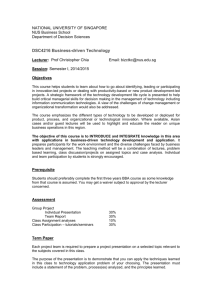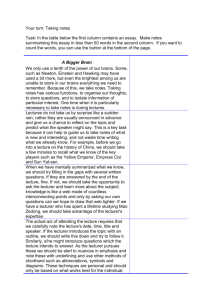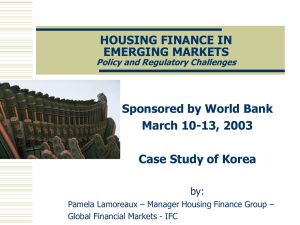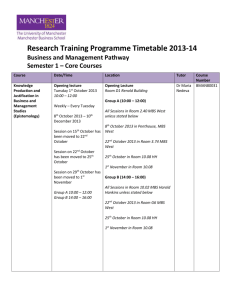Retail Marketing
advertisement
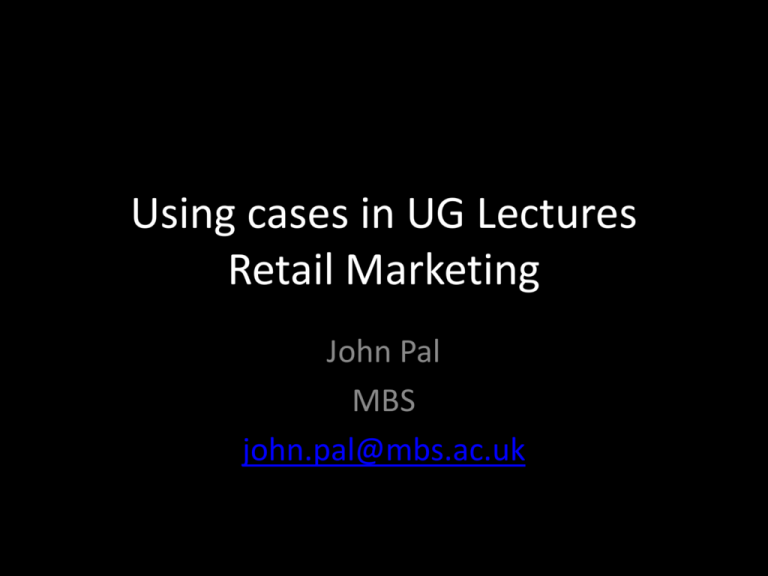
Using cases in UG Lectures Retail Marketing John Pal MBS john.pal@mbs.ac.uk The course • • • • • • Semester 1, final year elective 160 students 11 * 2 hour lectures 4 * 1 hour seminars Managerially focused Approach - Kolb Concrete experience Active Experimentation Reflective observation Abstract conceptualisation Source: Healey, M. & Jenkins, A. (2000) Kolb's Experiential Learning Theory and Its Application in Geography in Higher Education, Journal of Geography, 99, pp.185-195] Cases used in lectures • • • • Rise and fall of Dixons (2 weeks) Footsmith (stockloss) Supplier selection (useful for the assignment) Range selection (useful for the assignment) How the cases are used • Loaded onto BB9 one week prior to lecture • My expectations of students: 1. Prepare 2. Participate 3. Reflect and apply learning in a. Coursework b. Exam Using cases • • • • • Bring reality closer to the classroom Crystallise issues – limited goals As a point of departure Formative – it’s OK to try out ideas Is there a right answer? The Harvard method. Class participation is assessed. The forced curve is used. I think that they are useful as they encourage students to apply theory to 'real life' settings. We all know that theory without application is of limited use and doesn't translate perfectly into the work place setting. By applying theory to 'real life' setting students can see how theories need to be adapted. Case studies are far more interesting than just textbook reading. Students apply knowledge to 'real life' settings and gain a better understanding of topic material. Case studies help students to decide for themselves whether a career in retail is right for them and they gain insights into the workings of the business. The case studies help to ignite passion and motivation to gain further insights into the workings of the industry. Case studies promote student participation and engagement in the lecture as students offer their own thoughts often provoking debate (a reflection that there is no absolute right answer). The case studies provide a refreshing change to lectures that can sometimes seem rather monotonous, following a set format that fails to motivate students and offers limited insight into the field of study. The lecturer should make an effort to use case studies that students will find interesting and can relate to e.g. a well known retailer in the case of retail marketing. Case studies help students to gain confidence in their own abilities and act to reduce feelings of anxiety and stress about exams - they realise that they do have a grasp of the topic material and that they do have valid opinions. Case studies from the lecturer provide a forum for immediate feedback - something that students rate the business school poorly in the National Student Survey. I hear and I forget, I see and I remember, I do and I understand . Using cases in UG Lectures Retail Marketing John Pal MBS john.pal@mbs.ac.uk





